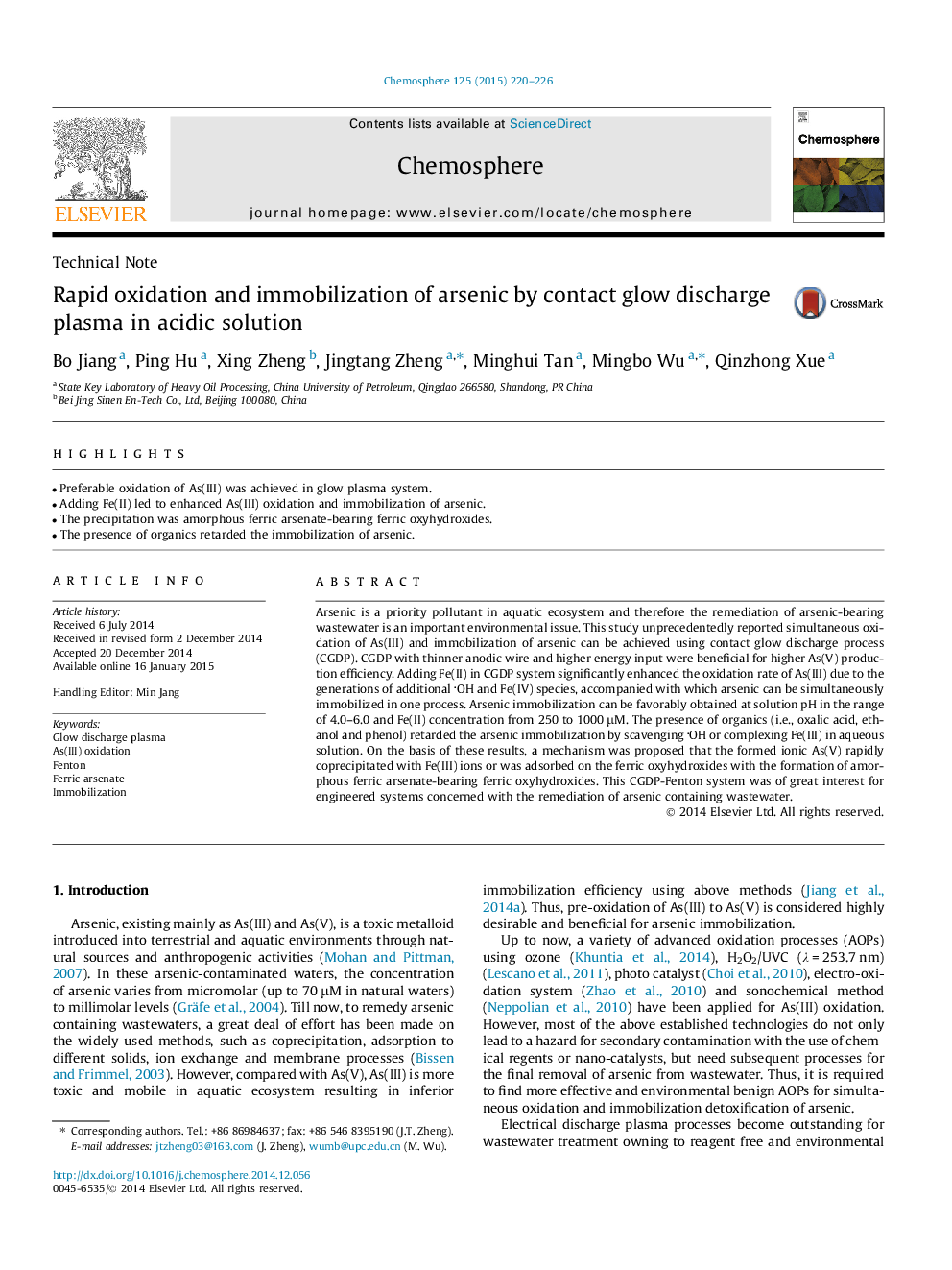| کد مقاله | کد نشریه | سال انتشار | مقاله انگلیسی | نسخه تمام متن |
|---|---|---|---|---|
| 4408362 | 1618846 | 2015 | 7 صفحه PDF | دانلود رایگان |
• Preferable oxidation of As(III) was achieved in glow plasma system.
• Adding Fe(II) led to enhanced As(III) oxidation and immobilization of arsenic.
• The precipitation was amorphous ferric arsenate-bearing ferric oxyhydroxides.
• The presence of organics retarded the immobilization of arsenic.
Arsenic is a priority pollutant in aquatic ecosystem and therefore the remediation of arsenic-bearing wastewater is an important environmental issue. This study unprecedentedly reported simultaneous oxidation of As(III) and immobilization of arsenic can be achieved using contact glow discharge process (CGDP). CGDP with thinner anodic wire and higher energy input were beneficial for higher As(V) production efficiency. Adding Fe(II) in CGDP system significantly enhanced the oxidation rate of As(III) due to the generations of additional OH and Fe(IV) species, accompanied with which arsenic can be simultaneously immobilized in one process. Arsenic immobilization can be favorably obtained at solution pH in the range of 4.0–6.0 and Fe(II) concentration from 250 to 1000 μM. The presence of organics (i.e., oxalic acid, ethanol and phenol) retarded the arsenic immobilization by scavenging OH or complexing Fe(III) in aqueous solution. On the basis of these results, a mechanism was proposed that the formed ionic As(V) rapidly coprecipitated with Fe(III) ions or was adsorbed on the ferric oxyhydroxides with the formation of amorphous ferric arsenate-bearing ferric oxyhydroxides. This CGDP-Fenton system was of great interest for engineered systems concerned with the remediation of arsenic containing wastewater.
Journal: Chemosphere - Volume 125, April 2015, Pages 220–226
